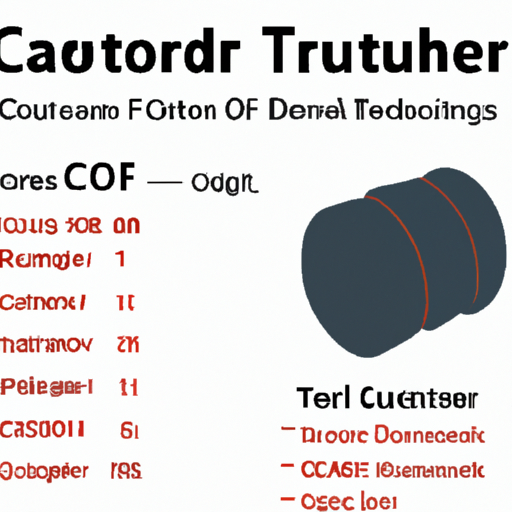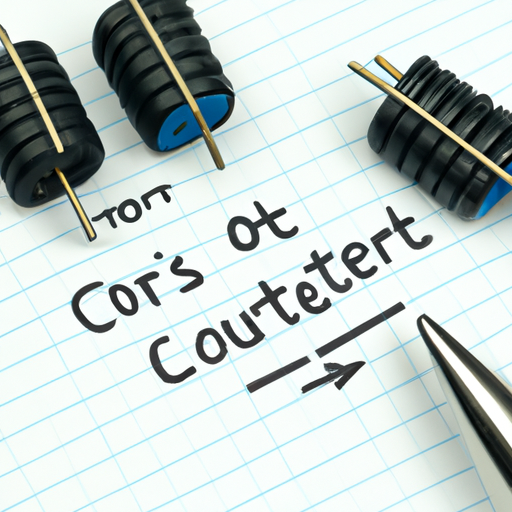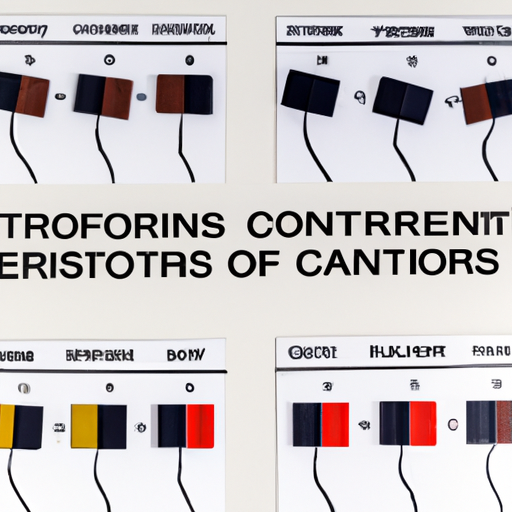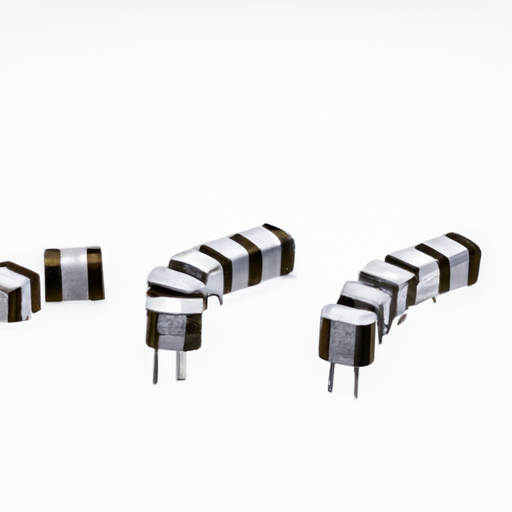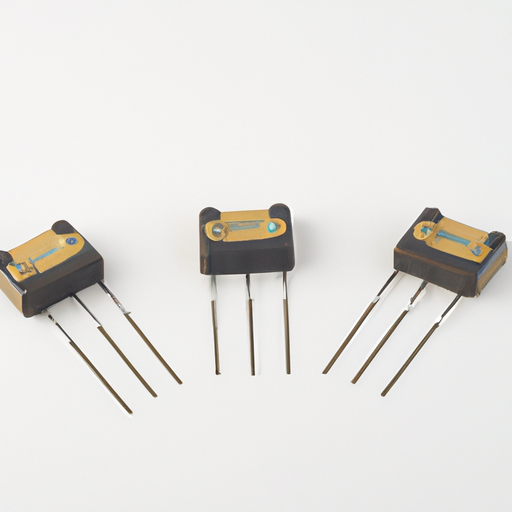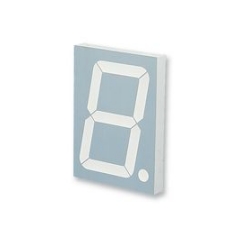Latest Inductor Function Specifications
Latest Inductor Function Specifications
I. Introduction
Inductors are fundamental components in electrical engineering, playing a crucial role in various applications ranging from power supplies to signal processing. An inductor is a passive electrical component that stores energy in a magnetic field when electric current flows through it. The importance of inductors cannot be overstated; they are essential for managing current flow, filtering signals, and storing energy in circuits. This document aims to explore the latest specifications and functions of inductors, providing insights into their design, types, and applications.
II. Basic Principles of Inductors
A. Electromagnetic Induction
The operation of inductors is based on the principles of electromagnetic induction, which can be understood through two fundamental laws:
1. **Faraday's Law of Induction** states that a change in magnetic flux through a circuit induces an electromotive force (EMF) in that circuit. This principle is the foundation of how inductors function, as the current flowing through the inductor creates a magnetic field that can influence other components in the circuit.
2. **Lenz's Law** complements Faraday's Law by stating that the direction of the induced EMF will always oppose the change in current that created it. This property is crucial for the stability and functionality of circuits that utilize inductors.
B. Inductance: Definition and Units
Inductance is the property of an inductor that quantifies its ability to store energy in a magnetic field. It is measured in henries (H), with common subunits including millihenries (mH) and microhenries (µH). There are two types of inductance:
1. **Self-Inductance** refers to the inductance of a single coil, where a change in current through the coil induces an EMF in the same coil.
2. **Mutual Inductance** occurs between two coils, where a change in current in one coil induces an EMF in the other coil.
C. Inductor Components
Inductors are composed of several key components:
1. **Core Materials**: The core material significantly affects the inductor's performance. Common materials include air, iron, ferrite, and various composite materials, each offering different magnetic properties.
2. **Wire Types and Configurations**: The wire used in inductors can vary in gauge, insulation, and configuration (e.g., solenoid, toroidal). These factors influence the inductor's resistance, inductance, and overall efficiency.
III. Types of Inductors
Inductors come in various types, each suited for specific applications:
A. Air Core Inductors
These inductors use air as the core material, making them lightweight and suitable for high-frequency applications. They have lower inductance values and are often used in RF circuits.
B. Iron Core Inductors
Iron core inductors provide higher inductance values due to the magnetic properties of iron. They are commonly used in power applications but can suffer from core losses at high frequencies.
C. Ferrite Core Inductors
Ferrite cores are made from ceramic materials that exhibit high magnetic permeability. These inductors are ideal for high-frequency applications and are widely used in switching power supplies.
D. Toroidal Inductors
Toroidal inductors have a doughnut-shaped core, which minimizes electromagnetic interference (EMI) and provides high inductance in a compact form factor. They are often used in audio and power applications.
E. Variable Inductors
These inductors allow for adjustable inductance values, making them useful in tuning circuits and applications where flexibility is required.
F. Specialty Inductors
Specialty inductors, such as RF inductors and power inductors, are designed for specific applications, offering tailored performance characteristics to meet unique requirements.
IV. Latest Specifications in Inductor Technology
The specifications of inductors have evolved significantly, driven by advancements in materials and manufacturing techniques. Here are some of the latest specifications:
A. Inductance Values
Inductors are available in a wide range of inductance values, from microhenries to henries, catering to various applications. Tolerance levels are also critical, with modern inductors offering tighter tolerances for improved performance.
B. Current Ratings
Inductors must handle specific current levels without saturating. Key current ratings include:
1. **Saturation Current**: The maximum current an inductor can handle before its inductance drops significantly.
2. **RMS Current**: The root mean square current that the inductor can handle continuously without overheating.
C. DC Resistance (DCR)
DCR is a measure of the resistance of the wire used in the inductor. Lower DCR values are desirable as they reduce power losses and improve efficiency.
D. Quality Factor (Q)
The quality factor (Q) of an inductor indicates its efficiency. A higher Q value means lower energy losses, making it suitable for high-frequency applications.
E. Self-Resonant Frequency (SRF)
The self-resonant frequency is the frequency at which the inductor's reactance equals its resistance, causing it to behave like a resistor. Understanding SRF is crucial for designing circuits that operate at specific frequencies.
F. Temperature Coefficient
The temperature coefficient indicates how the inductance value changes with temperature. Inductors with low temperature coefficients are preferred for applications requiring stable performance across varying temperatures.
G. Size and Form Factor
The trend towards miniaturization has led to the development of smaller inductors, particularly in surface mount configurations. This trend is essential for modern electronics, where space is at a premium.
V. Applications of Inductors
Inductors are utilized in a wide array of applications, including:
A. Power Supply Circuits
Inductors are critical in power supply circuits, where they help smooth out voltage fluctuations and store energy.
B. Filtering Applications
Inductors are used in filters to block high-frequency noise while allowing low-frequency signals to pass, making them essential in audio and communication systems.
C. Energy Storage
Inductors store energy in their magnetic fields, which can be released when needed, making them vital in applications like switch-mode power supplies.
D. Signal Processing
In signal processing, inductors are used in various configurations to manipulate signals, including in oscillators and amplifiers.
E. RF Applications
Inductors are crucial in radio frequency (RF) applications, where they help tune circuits to specific frequencies and filter unwanted signals.
F. Automotive and Industrial Applications
Inductors are widely used in automotive electronics, industrial machinery, and renewable energy systems, where they play a role in energy management and signal processing.
VI. Recent Innovations in Inductor Design
The field of inductor design has seen several recent innovations:
A. Advances in Core Materials
New core materials, such as nanocrystalline and amorphous alloys, offer improved magnetic properties, leading to higher efficiency and reduced losses.
B. Enhanced Manufacturing Techniques
Innovations in manufacturing, including 3D printing and additive manufacturing, allow for more complex designs and improved performance characteristics.
C. Integration with Other Components
Inductors are increasingly being integrated with other components, such as capacitors, to form inductor-capacitor (LC) filters and inductor-integrated circuits, enhancing functionality and reducing space requirements.
VII. Challenges and Considerations
Despite advancements, several challenges remain in inductor design and application:
A. Thermal Management
Inductors generate heat during operation, necessitating effective thermal management strategies to ensure reliability and performance.
B. Electromagnetic Interference (EMI)
Inductors can generate EMI, which can interfere with other components. Proper shielding and layout design are essential to mitigate these effects.
C. Reliability and Longevity
Inductors must be designed for reliability, especially in critical applications. Factors such as material selection and manufacturing quality play a significant role in longevity.
D. Environmental Considerations and Sustainability
As the demand for sustainable electronics grows, manufacturers are exploring eco-friendly materials and processes to reduce the environmental impact of inductors.
VIII. Conclusion
In summary, inductors are vital components in modern electrical engineering, with specifications and functions continually evolving. Understanding the latest advancements in inductor technology is essential for engineers and designers to create efficient and reliable circuits. As we look to the future, trends such as miniaturization, integration, and sustainable practices will shape the development of inductors, ensuring their relevance in an ever-changing technological landscape.
IX. References
1. Academic Journals on Electrical Engineering and Circuit Design
2. Industry Standards and Guidelines from organizations like IEEE and IEC
3. Manufacturer Specifications and Datasheets from leading inductor manufacturers
This blog post provides a comprehensive overview of the latest inductor function specifications, suitable for engineers, students, and anyone interested in the field of electrical engineering. By understanding these specifications, readers can make informed decisions when selecting inductors for their applications.

